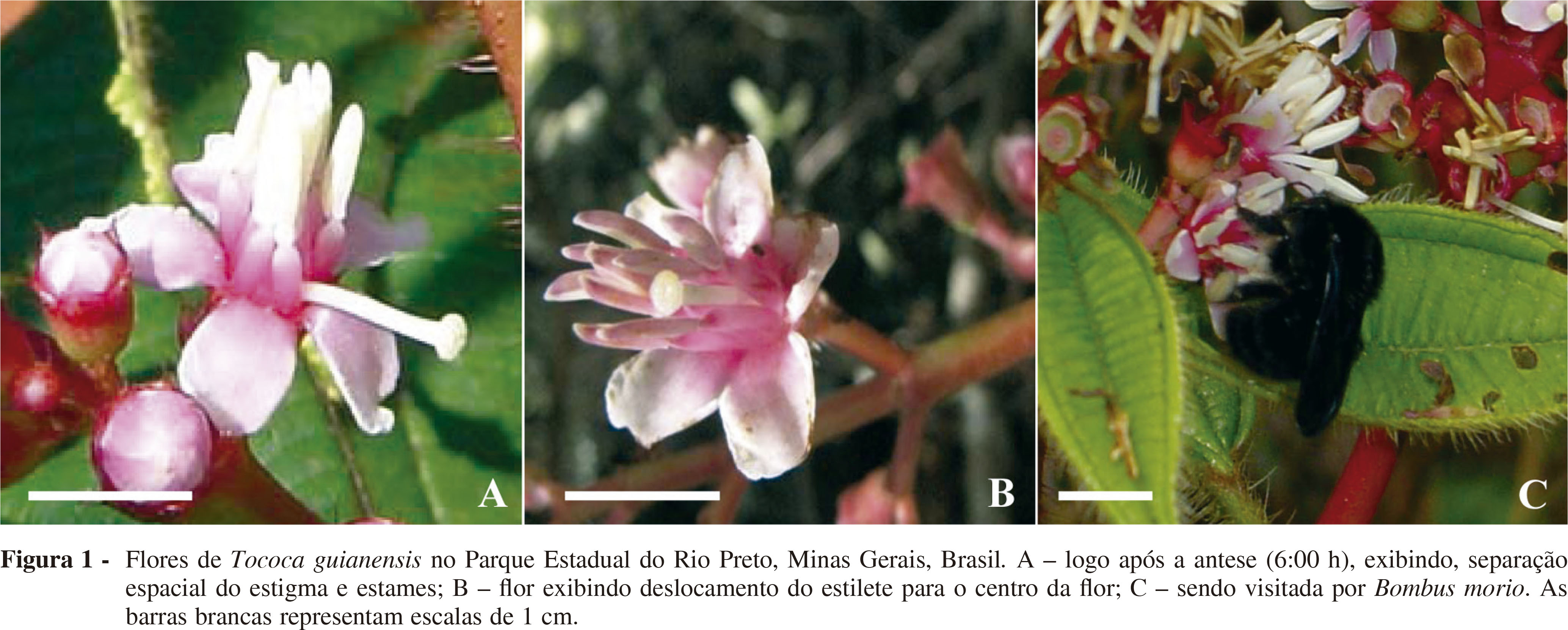Floral biology and behavior of Tococa guianensis Aubl. (Melastomataceae) pollinators
DOI:
https://doi.org/10.35699/2675-5327.2013.23831Keywords:
Bombus, buzz-pollination, melittophily, pollen viabilityAbstract
The floral biology of Tococa guianensis was studied in the “campo rupestre” vegetation of the Rio Preto State Park, Minas Gerais state, southeastern Brazil, by observing pollen availability and viability and behavior of floral visitors along the day. Flower visitors were grouped as effective, occasional or nectar robbers according to their behavior and pollen carriage. The flowers of T. guianensis presented herkogamy during anthesis and produced large amounts of viable pollen grains as floral rewards. Anthesis begins around 04:30 h and stigma receptivity starts at 05:45 h. Initially, herkogamy is caused by style deflection to either right or left positions. During the course of the day the style turns upright, approaching the stigma to the stamens. Bees were the most abundant visitors, especially Bombus atratus and B. morio, which were considered as effective pollinators because of their visitation behavior and morphology that makes pollen deposition on the stigma possible. Frieseomelitta varia and Augochloropsis cf. smithiana were considered occasional pollinators. Floral visits were more frequent in the morning, declining in frequency as both pollen quantity and viability decrease along the day.
Downloads

Downloads
Published
How to Cite
Issue
Section
License

This work is licensed under a Creative Commons Attribution-NonCommercial 4.0 International License.
